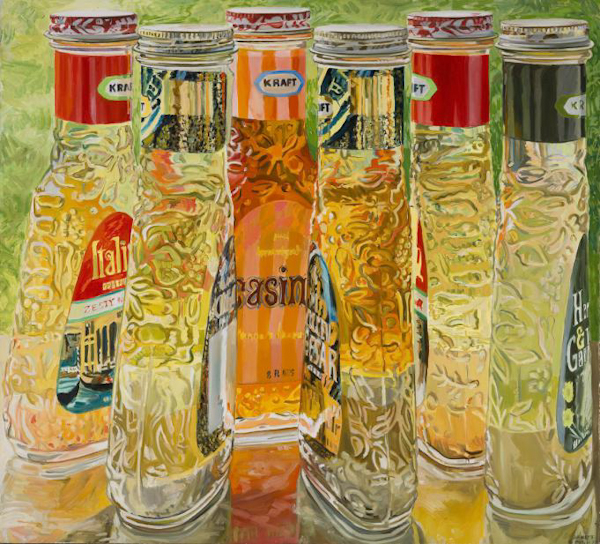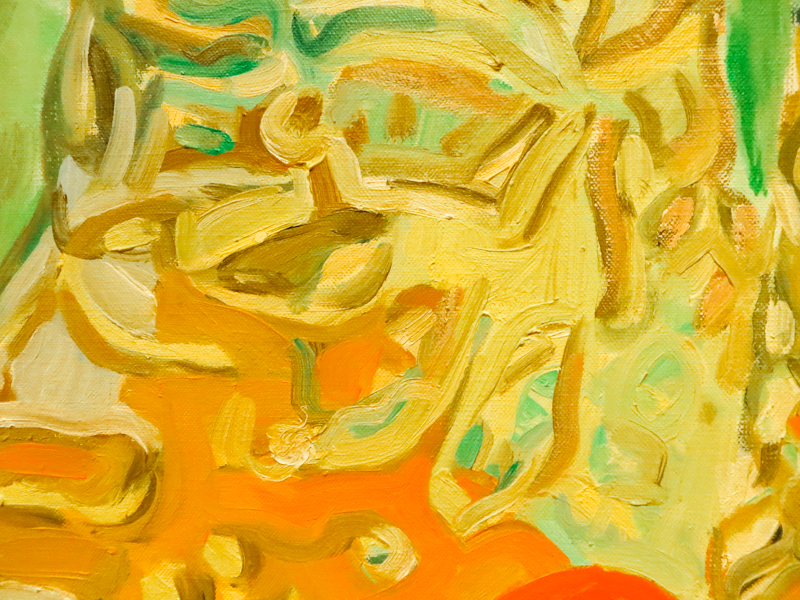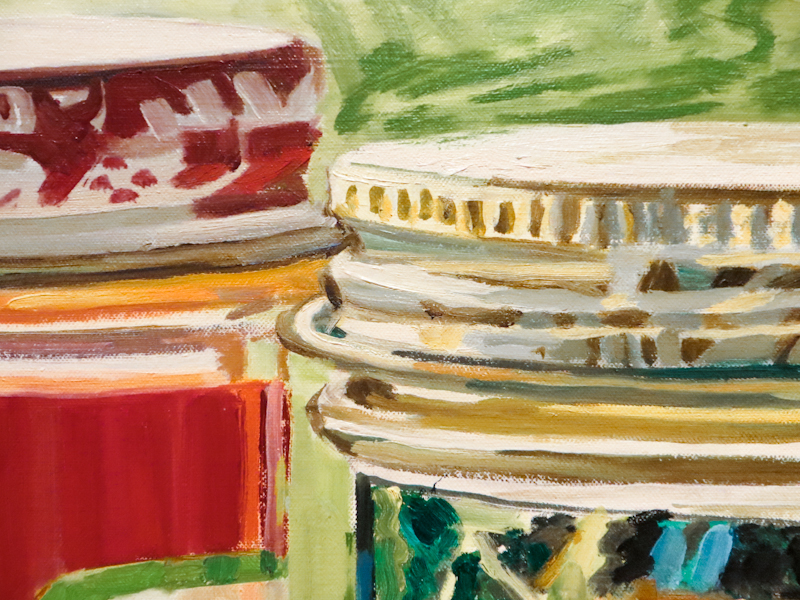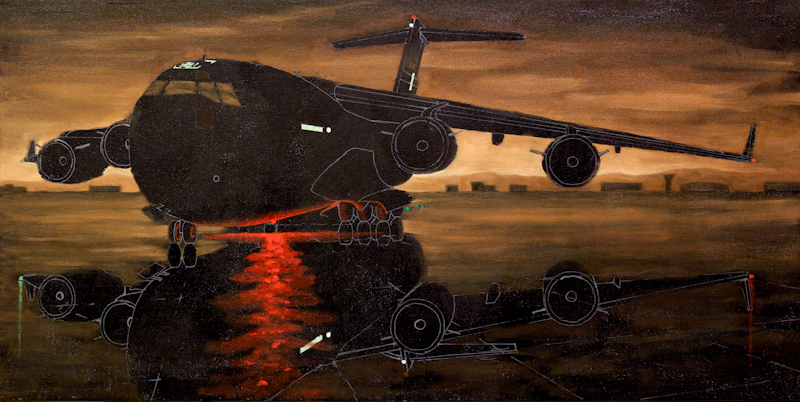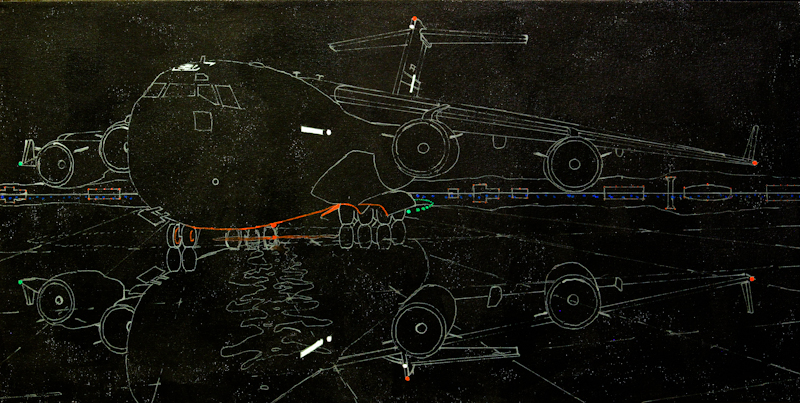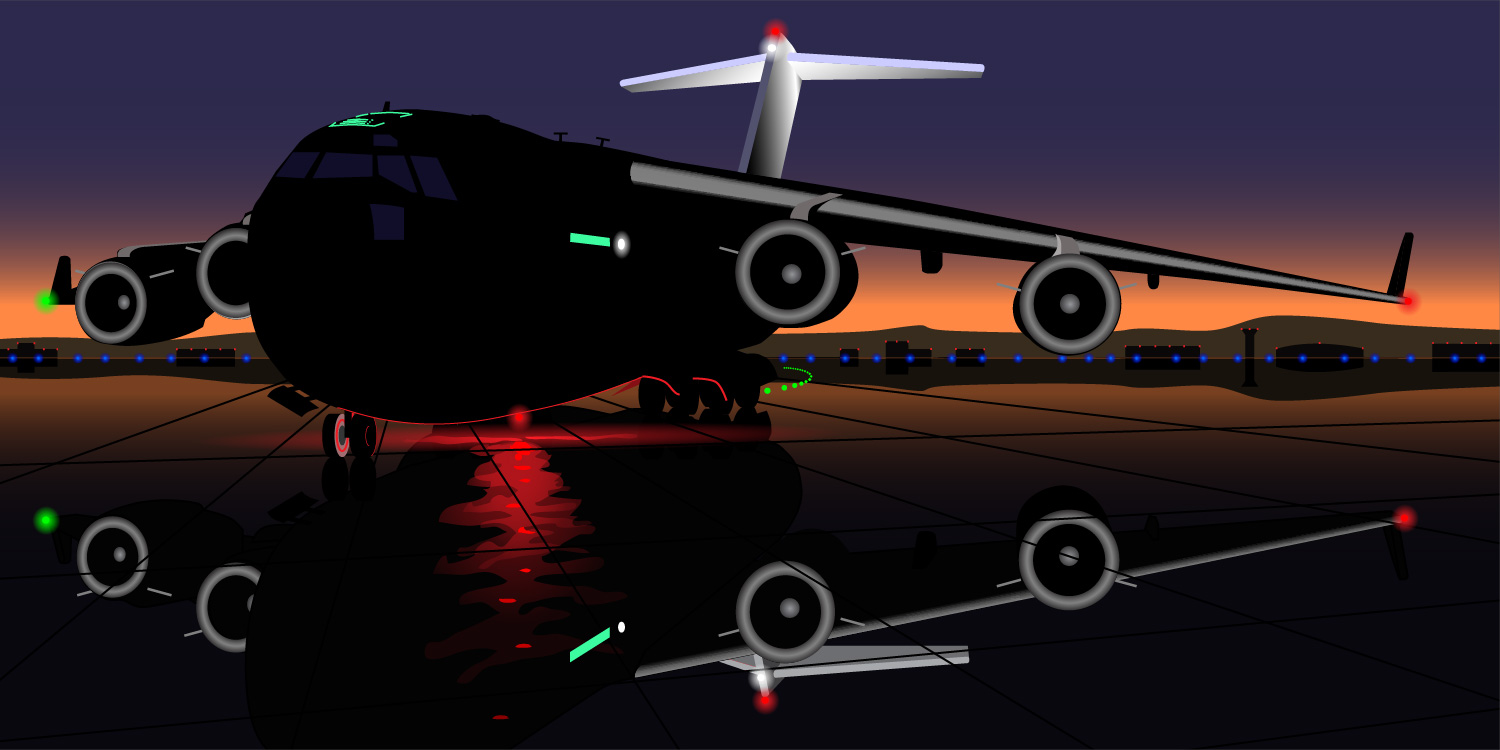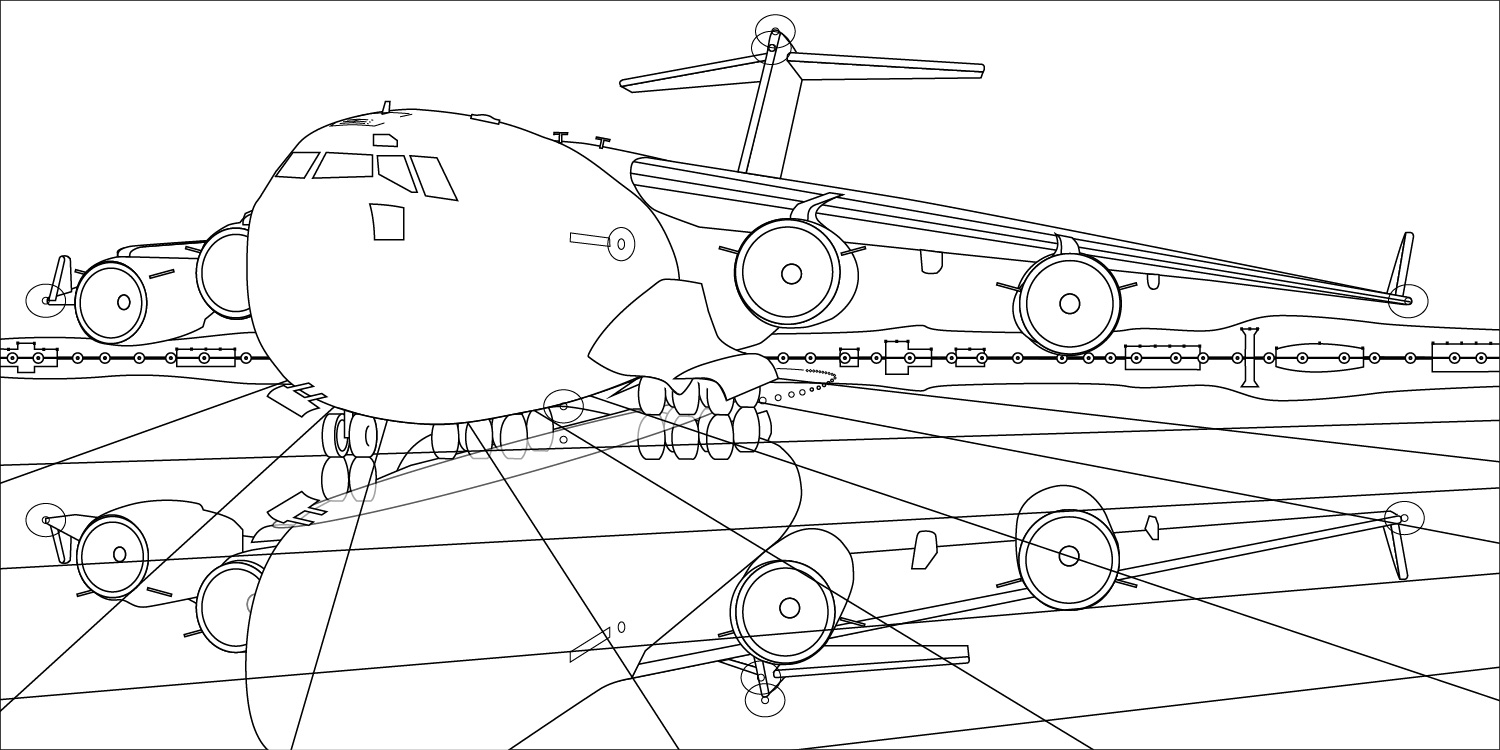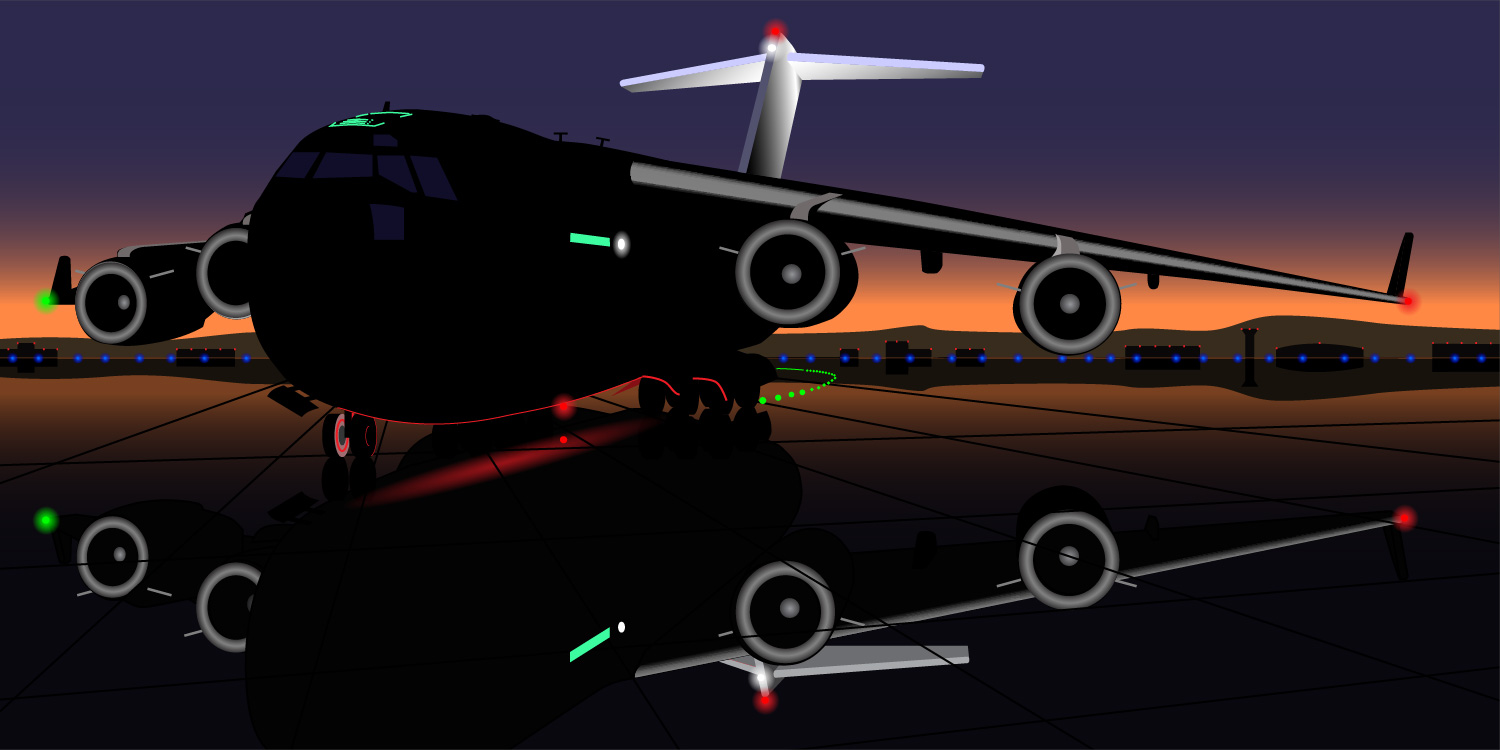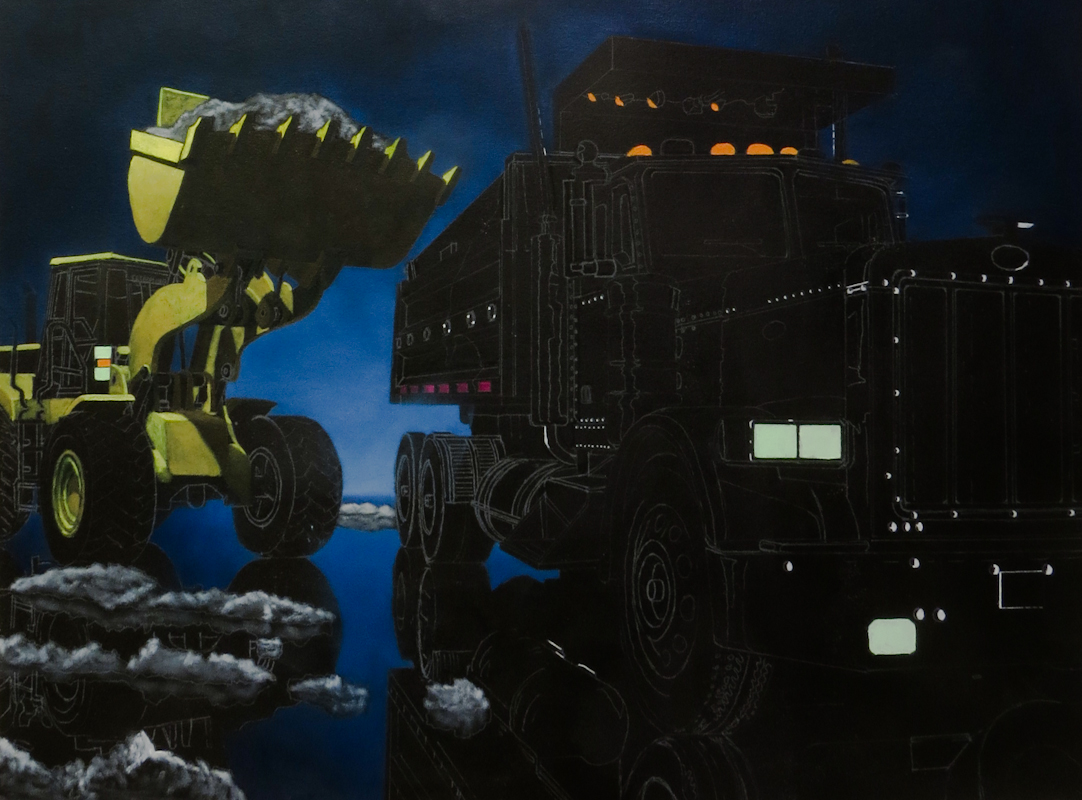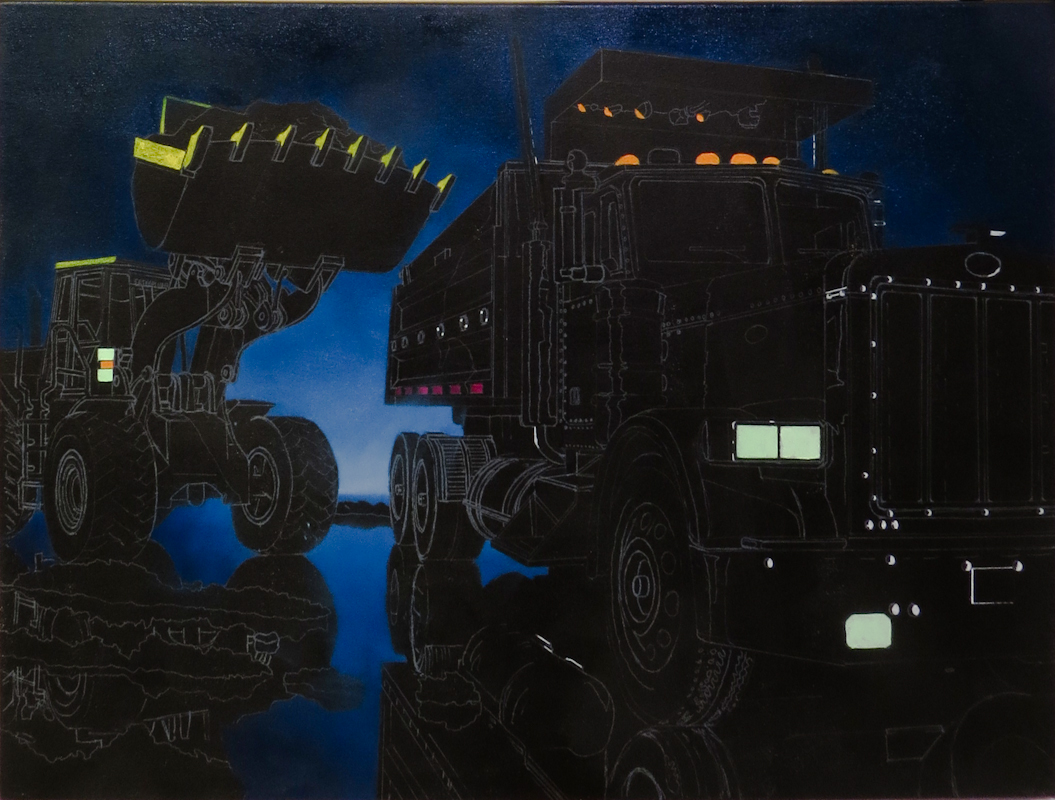I saw this interesting piece by Janet Fish at the Mount Holyoke College Art Museum. Janet Fish is a realist artist, but as you can see in the closeups, she is still quite painterly.
Tag Archives: painting
February 21, 2016
Finally getting back to the C-17 nocturne after a week of travelling. This evening I lightened the sky and hills, removed the building reflections, and worked on the pool of warm red light spilling out from underneath the belly of the beast. The composition seems much stronger now that the sky is lighter. It is interesting – the sky on the horizon is nearly white but the image still reads as a nocturne.
At this point, it remains hard to visualize the final composition because I haven’t illuminated the vertical stabilizer and the leading edges of the wings and the engine nacelles. Once I have these elements in place I should be able to adjust all of the values and then start adding details.
February 10, 2016
Last night I finished the drawing and then spent about an hour transferring it to an 18″ x 36″ black canvas. The lines were drawn with a Montana acrylic paint marker and then I added a few color notes with a small brush and Golden Heavy Body acrylics.
This evening I painted the clouds, the distant hills, the buildings, and their reflections on the wet tarmac. The painting is really rough at this stage – I’m mainly trying to figure out the value structure.
The challenge is that the scene is a nocturne and needs to read as such, but I can’t allow the painting get too dark, or the composition will get lost.
February 3, 2016
This design is almost ready to paint! I worked a lot more on the reflection of the red light on underside of the fuselage, and I adjusted the sky colors and added more runway lights. I also moved the cracks in the tarmac so that they intersect the lighter parts of the plane’s reflection in more interesting ways.
There are a few more areas that I could improve, but I really want to start painting. The most important is the shape of the top of the tail – the C17, has a really curvaceous bulge where the horizontal stabilizers meet and it would be nice to get this into the drawing. Another area is the rudder. If I offset the rudder slightly, the silhouette of the tail will be much more interesting. Other, less important details include the markings and formation lights on the tail.
C17 Globemaster III
It’s been a while since my last post, but I’ve been busy working out a new painting design in Adobe Illustrator. This design will be the basis for a large oil painting. I started with a small plastic model of a Boeing C17 Globemaster III cargo plane that’s about 10″ long. My first goal was to come up with interesting lighting and compositions.
I placed the model on a sheet of clear acrylic and then photographed it in a darkened room, using bike headlamps as the only source of light. The digital camera allowed me to rapidly prototype lighting and composition ideas.
Once I settled on a composition that was promising, I put the camera onto a tripod and took a number of shots with different lighting. This allowed me to mix and match the best lighting effects from several images. At this point I used Adobe Photoshop to produce a composite image to guide me through the drawing and color studies.
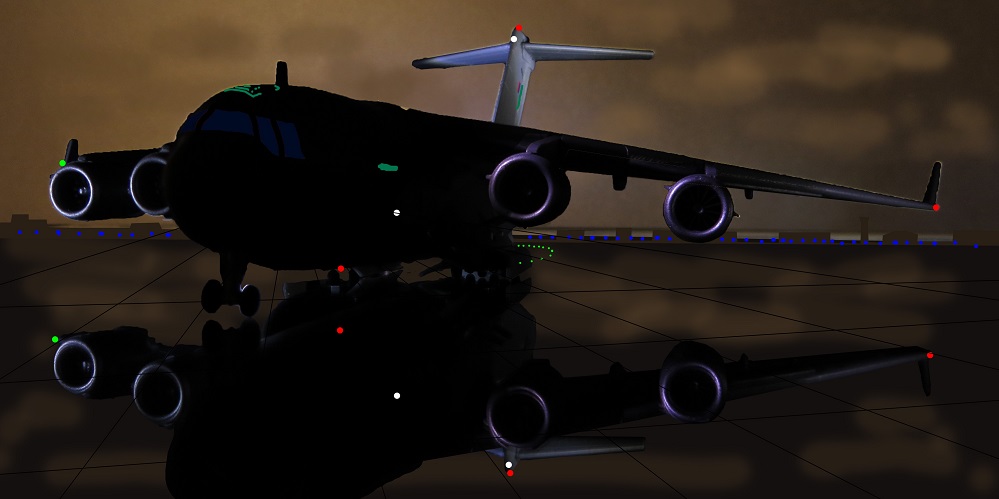
Photoshop image combines best lighting passages from several photos with a hand-painted cloudy background.
My next step was to set up the plane and the composite image in front of me and produce a detailed line drawing. This was done in Adobe Illustrator. I didn’t like the shape of the nose gear and windshield on the model, so I adjusted them based on photos of the actual plane. Same for the main gear doors.
The model was also a little lopsided from a poor gluing job in the factory, so I lowered the starboard wing in the drawing and moved the number one engine (outboard, port) back underneath its pylon. I also added antennas and navigation lights. I felt it was important to include the green light on the starboard winglet, so I extended this wing a bit so that it protrudes beyond the number four engine (outboard, starboard).
Once I had the line drawing, I was able to begin experimenting with color studies. Here’s one with a dark aircraft against a bright white background.
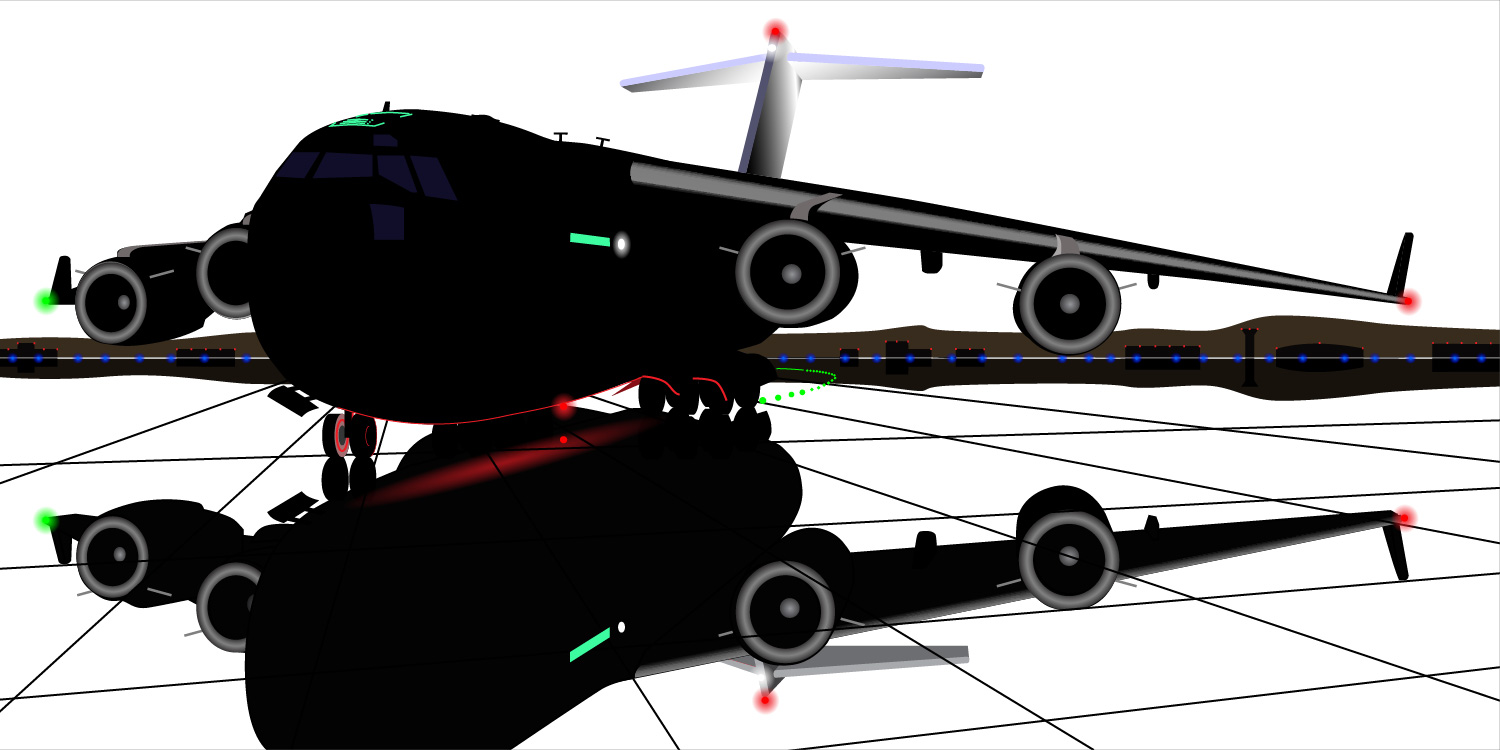
This study with a light background really shows off the composition. I need to take care not to lose the strong lines as I darken the sky.
The image in my mind’s eye, from the beginning, was a nocturne. Since they say it’s always darkest before the dawn, my most promising idea is daybreak. I like all the color, but I may have to lighten the sky a bit to keep the composition strong.
I will tweak the drawing a bit more and then transfer it to a black 18″ x 36″ canvas. Then I can start painting.
December 6, 2015
Finally got some time to paint again. Did the front wheel of the dump truck and most of the warm reflections. Also added an orange running light.
This session I used two strings – a cool neutral for the chrome and a warm for the reflections. The cool string was based a mixture of Prussian Blue, Burnt Umber, Permanent Alizarin Crimson, and Cadmium Yellow Medium, lightened with Titanium White. The warm string consisted of varying amounts of Burnt Sienna, Cadmium Red Medium, and Cadmium Yellow Medium, mixed into the neutral string.
For this painting I’ve mainly been using Da Vinci Top Acryl brights. These are fairly stiff synthetic brushes that hold a sharp, chiseled point. They work really well with the water miscible paints, especially when I need to use a brush full of solvent (in this case water) to sharpen up an edge. The brushes are also good for modulating the tone of lighter paints on a black canvas. Since they are really stiff, I can use them to scrub the paint to allow more of the black to show through when I need a darker tone.
November 26, 2015
Happy Thanksgiving! The cab of the truck and its reflection in the exhaust stack are now painted. Next up – probably the chrome on the front wheel of the truck and then a lot of the warmer highlights and reflections. I used a combination of Prussian Blue, Cadmium Yellow Medium, and Titanium White to give a warmer, greener blue that is slightly different from the color in the night sky.
November 22, 2015
November 15, 2015
I was really torn choosing between painting the loader literally or keeping it very dark and mysterious, as it appeared immediately after I painted the sky. My compromise was to exercise restraint and keep most of the yellows on the darker side. I definitely like where things are heading, but the darker, silhouetted look also had promise, so I may have to do a second version of this composition.
The yellow string was based on Cadmium Yellow Medium mixed with Raw Umber, Burnt Umber, and Prussan Blue. The yellow is Royal Talens Cobra and the other colors are Winsor & Newton Artisan Water Mixable.
The snow was really easy to paint – it is dry brushed Titanium White. I dipped the brush directly into the white, then wiped it almost dry with a paper towel. The snow is just sketched in now so that I can understand the composition. The plan is to revisit it to add more intense white highlights.
Here’s the painting in the studio.
November 9, 2015
The sky and its reflection are in! I’m using Winsor & Newton Artisan Water Mixable Oil Colors. Water miscible oils do have their downsides, but one thing I like about them is that I can easily go back in and sharpen an edge with a clean, wet brush. The same technique works for regular oils, but the brush needs to be loaded with a solvent like Gamsol. At this point, the horizon and the edges of the reflections below the horizon are soft. All other edges are hard. The sky is a mixture of Prussian Blue and French Ultramarine, lightened with Titanium White.
Now I have to decide what’s next: the yellows of the loader, the mysterious shadows on the dump box, or the bright blue on the cab of the truck?

